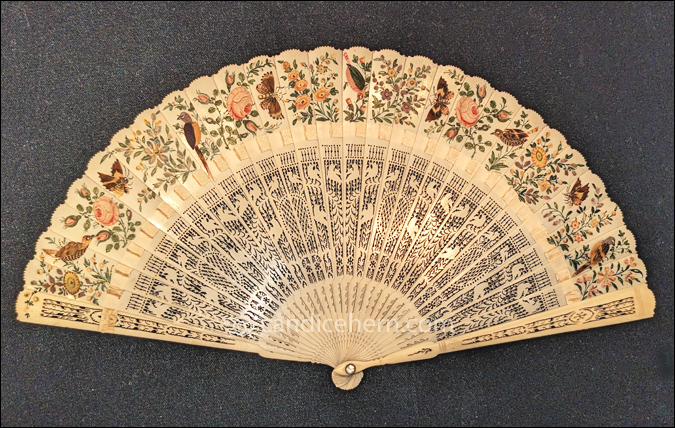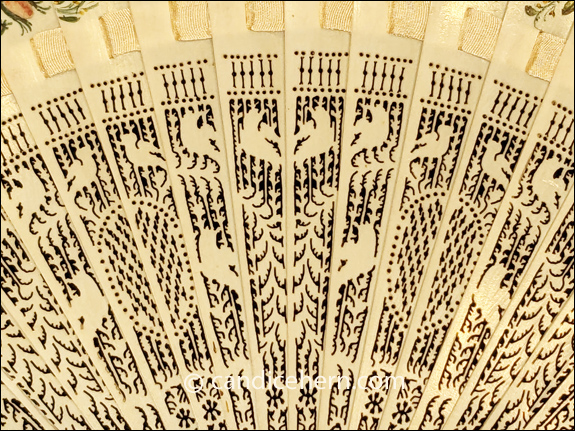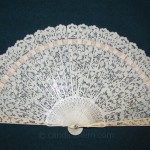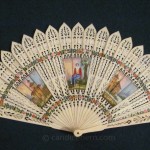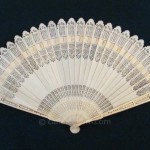This fan (c1810-1820) may look like most other ivory brisé fans, but it’s actually rather exceptional . The ivory sticks are delicately pierced with a very fine, lacy design, the upper portion left unpierced to allow for decoration.
The pierced pattern is not identical on each stick, as is often the case with brisé fans. Here, three patterns are used, alternately reversed to create a repeated pattern in groups of six sticks. The piercing is extremely fine, and would have required great skill with a tiny jeweler’s saw.
One of the most remarkable things about this fan, however, is the decoration on the upper portion of the sticks. It appears to be a very nice design with flowers, birds, and butterflies. But a closer look reveals that the birds and butterfly wings are actually made of real feathers, as you may be able to see in the detail below.
The flowers are also applied. They are made of tiny pieces of painted velvet. As seen in other painted examples on this site, the painter/decorator required considerable skill to insure that each individual stick was painted precisely, so that the whole composition connected properly when the fan was opened.
The delicate pierced design along with the superb applied decoration suggests that this was a very special fan.
This is an “opera” size fan, quite small, with sticks measuring only 6 ½”. The sticks and guards are threaded with ivory-colored silk ribbon, and held together with a rivet of black spot paste. The original pasteboard box survives, with a label from “Thomas Clark Junior, Exeter ‘Change, Strand, London,” who was likely the retailer but not the maker of the fan.
